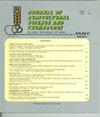气候变化和技术进步对棉花生产的影响:来自新疆地区的证据
IF 1.3
4区 农林科学
Q2 AGRICULTURE, MULTIDISCIPLINARY
引用次数: 3
摘要
中国是最大的棉花生产国,其次是美国。中国52%的棉花产自新疆地区。农业部门依赖于气候,而且在很大程度上容易受到未来气候变化的影响。气候因素直接影响棉花产量,因此,评估这些因素对棉花产量的影响势在必行。本文对新疆地区近30年棉花生产的气候变量与非气候变量的关系进行了实证研究。为此,采用计量经济学方法,采用“自回归分布滞后模型”(Autoregressive Distributed Lag Model, ARDL)分析所选变量之间的长期和短期关系。实证结果显示,平均气温、劳动力和降雨量每降低1%,棉花产量分别下降0.18%、1.94%和0.18%,呈显著负相关。然而,本研究表明,平均温度升高1%,技术变化和种植面积将分别增加0.07%,0.05和0.23%的棉花产量。综上所述,区域气候变化对棉花产量影响显著。虽然该研究分析了新疆地区的数据,但该模型可以适用于所有发展中国家。本研究有助于政策制定者及相关政府部门引进、推广和补贴环境友好型生产投入,并为农民和利益相关者制定长期计划,以教育、传播意识,并帮助采用新技能,以获得可持续的区域棉花生产力。本文章由计算机程序翻译,如有差异,请以英文原文为准。
Impact of Climate Change and Technological Advancement on Cotton Production: Evidence from Xinjiang Region, China
China is the largest producer of cotton crop, followed by the United States of America. China's 52% cotton is produced in Xinjiang Region. The agricultural sector depends on the climate, and it is substantially susceptible to future climate changes. Climate factors directly affect cotton production and, therefore, assessing the influence of these factors on the cotton output is imperative. This study empirically investigated the relationship between climate and non-climate variables on Xinjiang Region's cotton production over the last three decades. To this end, an econometric technique was employed and the "Autoregressive Distributed Lag Model" (ARDL) was used to analyze the long-run and short-run relation between the selected variables. Empirical results revealed that a 1% decrease in average temperature, labor force, and rainfall could decrease cotton production by 0.18, 1.94, and 0.18%, respectively, due to the significant negative relation. However, this study depicted 1% rise in average temperature, technological changes, and the cultivated area will increase cotton production by 0.07, 0.05, and 0.23%, respectively. In conclusion, the regional climate changes significantly affect cotton crop. Although the study analyzed the data from XUAR Region, this model can be applied to all developing countries. This research helps the policymakers and the respective government department to introduce, promote, and subsidize environment-friendly production inputs and make the long-term plan for farmers and stakeholders to educate, spread awareness, and help to adopt new skills to gain sustainable regional cotton productivity.
求助全文
通过发布文献求助,成功后即可免费获取论文全文。
去求助
来源期刊

Journal of Agricultural Science and Technology
AGRICULTURE, MULTIDISCIPLINARY-
CiteScore
1.90
自引率
8.30%
发文量
0
审稿时长
4.5 months
期刊介绍:
Journal of Agricultural Science and Technology is one of the TMU Press journals that is published by the responsibility of its Editor-in-Chief and Editorial Board in the determined scopes.
Journal of Agricultural Science and Technology (JAST) is an international research journal published bimonthly for the purpose of advancing the scientific studies. The subjects covered by JAST include all aspects of agriculture and natural resources (see Areas Covered). The journal will consider submissions from all over the world, on research works not being published or submitted for publication towards publication as full paper, review article and research note. The Papers are published in English with an extra abstract in Persian.
 求助内容:
求助内容: 应助结果提醒方式:
应助结果提醒方式:


